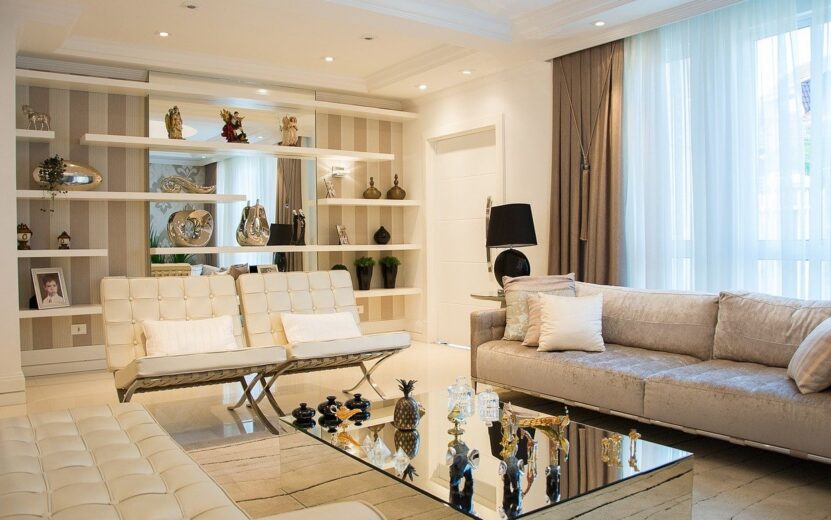Making your home feel more personal doesn’t have to be complicated or expensive. There are simple updates you can do that bring character to any space without much hassle.
Whether it’s switching out some hardware or upgrading the floors, small changes can make a big difference. The best part? You don’t need a big budget or tons of DIY skills to pull this off.
This guide will walk you through straightforward ways to transform your home into a space that feels more like you. Let’s explore some easy tweaks that can turn a basic room into something special.
Start With These Details
- Change the hardware
- Update the flooring
- Add molding
- Create a focal point
- Use floating shelves
- Upgrade the lighting
1. Change the Hardware
One of the easiest ways to add character to your home is by updating the hardware, like door knobs, drawer pulls, and cabinet handles. This small update can have a huge impact on the overall look of a room.
Popular Styles and Trends

Many homeowners are opting for vintage brass or matte black finishes, which bring a sleek, modern edge or old-world charm to spaces like kitchens and bathrooms. Brass and gold-tone knobs are often used for a more classic, elegant look, while matte black offers a minimalist, contemporary vibe.
Another growing trend is the mixing of metal finishes. You can combine brass and nickel, or chrome and matte black, to create a unique contrast that adds dimension to a room.
To give you an idea of the cost, you can find quality hardware at different price points. For example, a classic brass knob from retailers like Wayfair or Amazon can range from $5 to $15 per piece.
For a more modern look, matte black cabinet pulls from Home Depot range from $6 to $12 each, depending on the size and style.
If you’re looking to make a bigger impact, try designer brands like Anthropologie or Restoration Hardware. Their selections include high-end materials like glass, marble, and brushed metal, with prices starting around $20 per piece and going up to $100 or more for intricate designs.
For instance, a marble-and-brass drawer pull at Anthropologie costs around $24.
DIY Installation
Installing new hardware is straightforward and can be done with just a screwdriver. For cabinet handles, ensure you measure correctly to match the size of the existing holes. This makes the process smoother and avoids the need for drilling new holes.
Where to Buy
- Wayfair: Offers a range of affordable to mid-range options, with a focus on both vintage and modern styles.
- Home Depot: Great for standard, affordable hardware in many different finishes.
- Restoration Hardware: Best for high-end, classic designs that stand out as statement pieces.
- Amazon: Good for quick, budget-friendly options, with plenty of customer reviews to help guide your choice.
2. Update the Flooring
One of the most impactful ways to transform your home is by updating the flooring. It’s a change that not only adds character but also significantly enhances the aesthetic and value of your home.
Hardwood Flooring
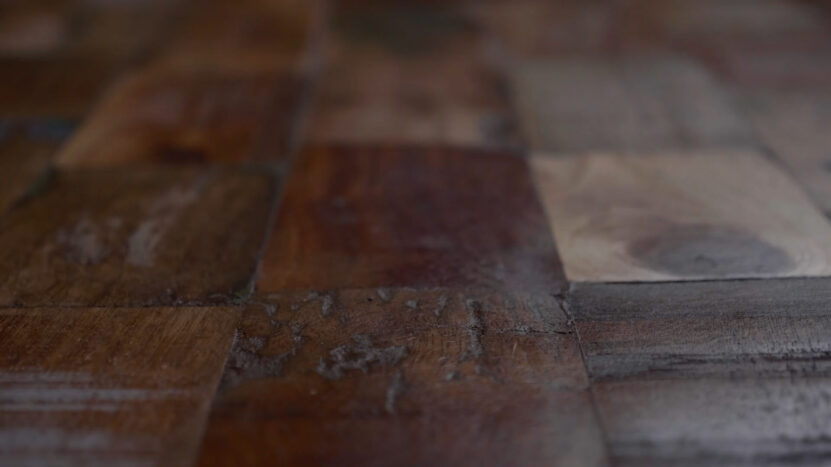
Hardwood flooring is a timeless choice that adds warmth and elegance to any space. Popular options include oak, maple, and cherry, which provide different levels of durability and grain patterns.
While hardwood is a classic option, you can also explore more unique wood species for a distinctive look. Installing reclaimed or antique hardwood is a great way to introduce history and charm into your home.
Vinyl Planks
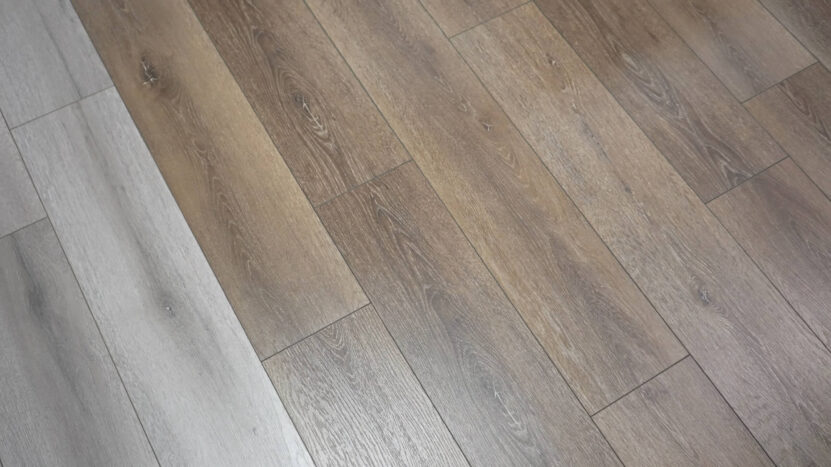
Vinyl plank flooring is a versatile and affordable alternative to hardwood, offering a range of designs that mimic wood or stone. It’s durable, waterproof, and ideal for high-traffic areas like kitchens and bathrooms.
Vinyl has become increasingly popular due to its ease of installation, making it a go-to option for homeowners who want a quick upgrade without professional help.
Hand-made and Custom Tiles
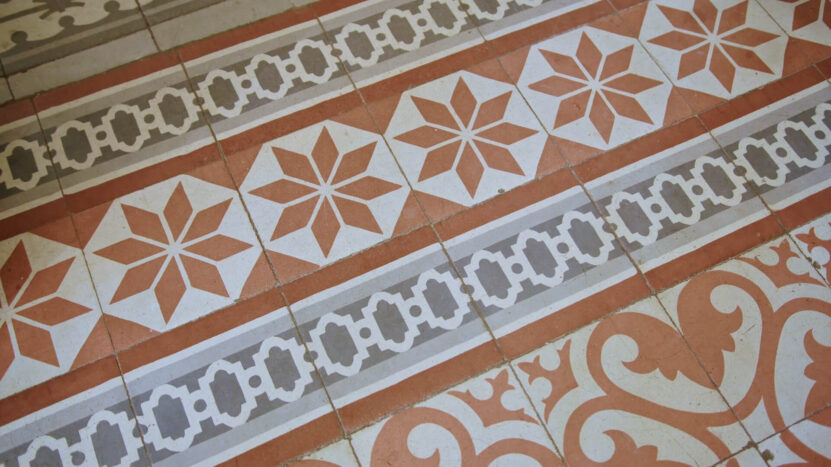
For a truly personalized touch, consider hand-made or custom tiles. Whether it’s in the kitchen, bathroom, or entryway, these tiles can create a focal point and set your home apart. Hand-crafted tiles often feature intricate designs and textures that mass-produced options lack.
Styles such as Moroccan, Spanish, or Mediterranean-inspired tiles can bring a unique cultural flair to your home.
Antique and Reclaimed Wood
Reclaimed wood floors are perfect for those seeking an eco-friendly option with plenty of character. These floors are sourced from old barns, factories, or other structures, and they often carry a rustic charm that new materials can’t replicate.
If you are looking for a manufacturer of antique flooring that will secure a traditional appearance to your home, check out realthinbrick.com.
3. Add Molding
Molding is a quick and effective way to add elegance and depth to your home. It can instantly transform plain walls by creating architectural interest. Whether you’re adding crown molding, baseboards, or wainscoting, this upgrade gives any space a finished and refined look.
Types of Molding
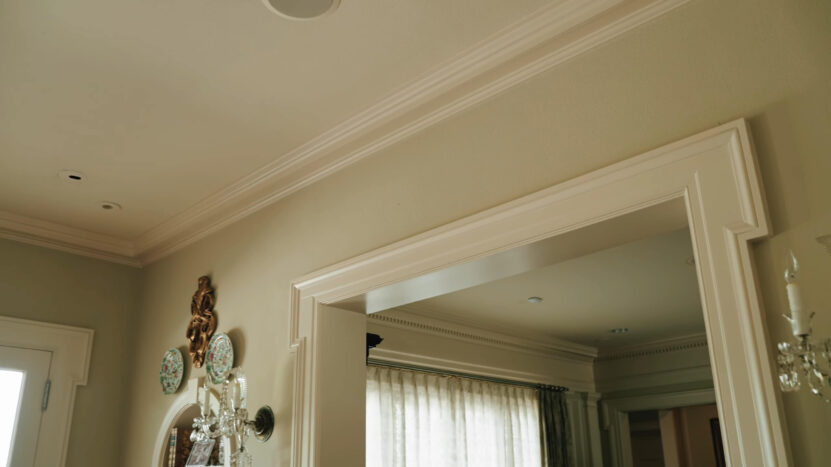
- Crown Molding: Installed where the walls meet the ceiling, crown molding adds a classic touch to living rooms, dining areas, and bedrooms. It comes in a variety of styles, from simple, sleek lines to more intricate, decorative designs. Prices for crown molding start around $1.50 to $3 per foot for basic MDF or pine, while hardwood options like oak can range between $4 and $12 per foot, depending on the intricacy of the design.
- Baseboards: Baseboards protect the lower portion of your walls and add a subtle finishing detail to any room. Basic MDF baseboards typically cost around $1 to $3 per foot, while more decorative hardwood options can go up to $5 to $8 per foot.
- Wainscoting and Chair Rails: These are installed partway up the wall and are a great way to add texture to hallways, dining rooms, or bathrooms. Prices for wainscoting panels usually start at around $10 per square foot, while chair rails range from $2 to $6 per foot.
Crown molding can dramatically enhance the look of a room, and even simple designs make a big impact. For example, a room measuring 10×12 feet can cost between $120 and $250 in materials alone for MDF crown molding, while higher-end hardwood moldings may push the price up to $400 to $600.
For installation, labor costs typically range from $4 to $8 per linear foot, depending on the complexity of the job and location.
Wainscoting is a popular choice in formal dining rooms or bathrooms. Installing wainscoting in a 200-square-foot dining room can cost about $1,000 to $2,500, depending on materials and labor. More detailed, custom designs can increase the price.
DIY or Professional Installation?
While smaller molding projects, like adding baseboards, can be DIY-friendly, crown molding and wainscoting may require professional help due to precise cuts and installation. Hiring a professional ensures clean, tight joints and a polished finish.
Expect to pay about $5 to $10 per linear foot for professional installation of crown molding, depending on the material and labor costs in your area.
4. Create a Focal Point
Creating a focal point in each room is one of the easiest ways to add character to your home. A focal point draws attention and provides a central spot that ties the room together. Whether it’s an accent wall, a gallery of artwork, or a custom fireplace, focal points help define a space and make it feel more personal.
Accent Walls
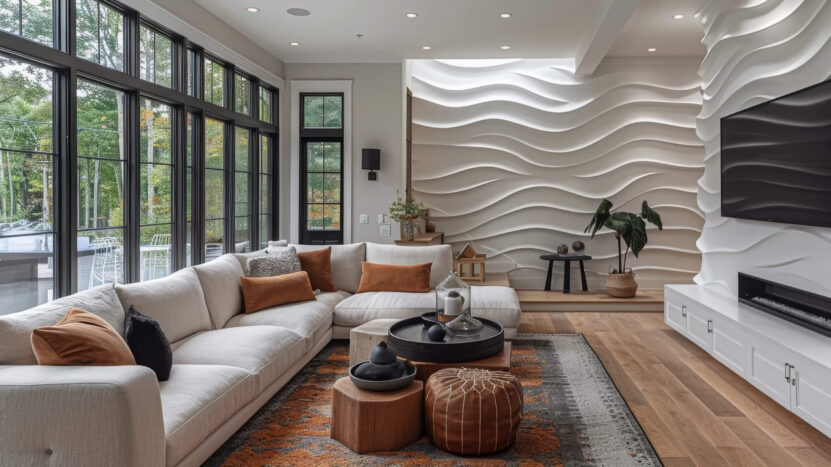
An accent wall is an affordable way to make a big change. You can use paint, wallpaper, or wood paneling to create a standout wall. Painting an accent wall can cost around $30 to $50, while wallpapers range from $0.50 to $2 per square foot for basic designs, with premium textures going up to $10 per square foot.
Bold colors or textured options like shiplap paneling are also popular for adding depth to a room.
Gallery Walls
Gallery walls are a great way to display personal photos or artwork. Frames from stores like IKEA can start at $5, while more decorative or custom frames can go up to $50 or more. A small gallery wall can be created for as little as $100 to $500, depending on the frames and prints you use.
Custom Fireplaces
Fireplaces are a fantastic focal point. A custom-built stone or brick fireplace can cost anywhere from $3,000 to $10,000, while more affordable electric fireplaces range from $300 to $1,500. If a full renovation is out of budget, upgrading the mantle with a reclaimed wood or modern metal finish can cost around $200 to $1,000.
Large Mirrors
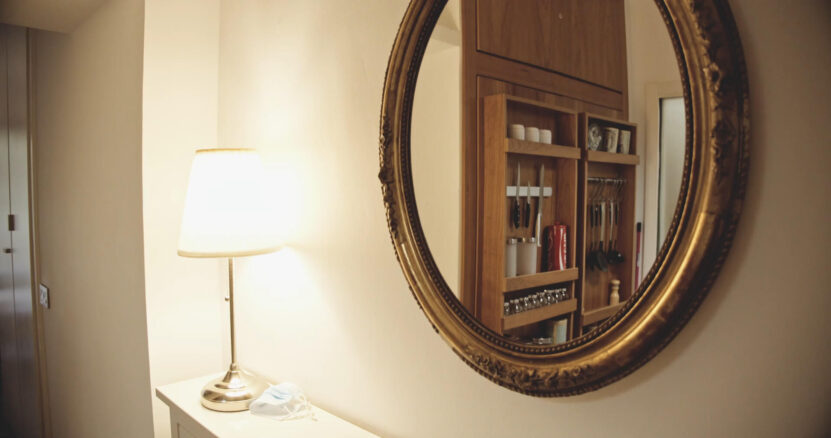
Mirrors create a focal point and make rooms feel larger. Large decorative mirrors can start at around $50, with high-end custom mirrors costing several thousand dollars. Vintage mirrors are particularly popular for their unique charm and can be found at antique stores or online for varying prices.
Where to Buy?
- Wayfair: Offers a range of mirrors, frames, and affordable accent pieces.
- IKEA: Good for budget-friendly frames for gallery walls.
- Anthropologie: Specializes in unique vintage-style mirrors and wall decor.
5. Use Floating Shelves
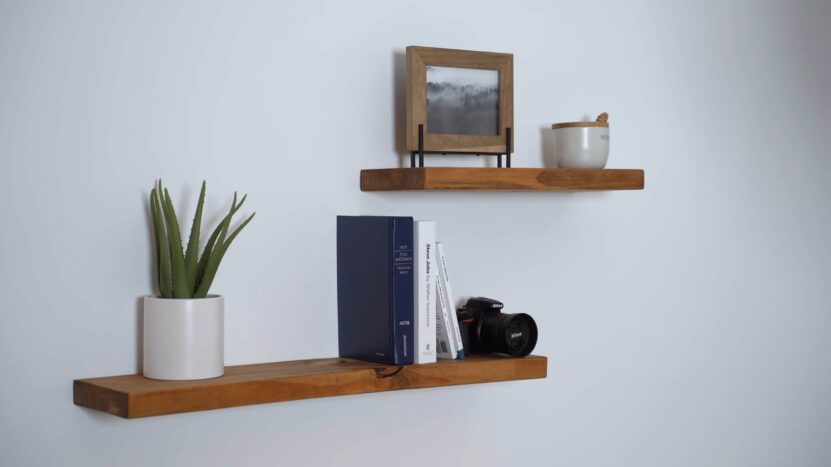
Floating shelves are an easy, practical way to add both character and function to your home. They provide storage while also displaying personal items, making any room feel more curated and lived-in. The great thing about floating shelves is their versatility—they work well in kitchens, living rooms, bedrooms, or even bathrooms.
Floating Shelves for Display
Floating shelves are ideal for displaying personal items like framed photos, plants, or art pieces. You can mix decorative items with functional ones, like cookbooks or vases, to create a balanced look.
A typical floating shelf installation can range from $20 to $100, depending on the material and size. Wooden floating shelves, especially reclaimed wood, are popular for adding warmth to a space.
For example, you could install a set of three floating shelves in a living room for about $60 in materials if you opt for mid-range wood shelves. Reclaimed wood shelves often cost a bit more, especially if you’re sourcing them from specialty suppliers.
Built-In Feel with Floating Shelves
A great design tip is to arrange floating shelves to give the impression of built-ins. When placed around a fireplace, TV, or along a wall, floating shelves can mimic the look of custom cabinetry. This option allows for a sleek, modern finish without the higher costs of actual built-ins, which can range from $1,500 to $6,000.
Floating shelves, by comparison, offer a more budget-friendly solution while still providing ample storage and visual interest.
Where to Use Floating Shelves
- Kitchens: Floating shelves are perfect for kitchens to store dishware, glasses, or even spices. They can replace traditional upper cabinets, creating an open, airy feel.
- Bathrooms: Use them to hold towels, toiletries, and plants. A small floating shelf set above the toilet can add both function and style.
- Living Rooms: Display decorative objects, books, and plants. For a balanced look, mix textures and heights across multiple shelves.
- Bedrooms: Floating shelves can act as bedside tables or as extra storage above dressers.
Custom and Hand-Made Floating Shelves
For a more unique touch, hand-made or custom floating shelves offer a level of personalization that store-bought options lack. Custom shelves can be made from materials like reclaimed wood or metal and crafted to fit any specific dimensions.
Prices for custom floating shelves can start at $100 per shelf and go up depending on the materials and labor involved.
Where to Buy?
- Home Depot: Offers affordable, ready-made floating shelves in a variety of finishes and sizes.
- Etsy: For custom and hand-made shelves, Etsy has a range of sellers offering personalized designs.
- West Elm: If you’re looking for high-quality materials and a modern design, West Elm provides more upscale options.
6. Upgrade the Lighting
Lighting plays a crucial role in setting the mood and enhancing the style of any room. Upgrading your home’s lighting fixtures can be an easy and effective way to add character without requiring a lot of effort. Whether you choose modern fixtures, vintage lamps, or statement pieces, the right lighting can completely transform a space.
Statement Lighting Fixtures
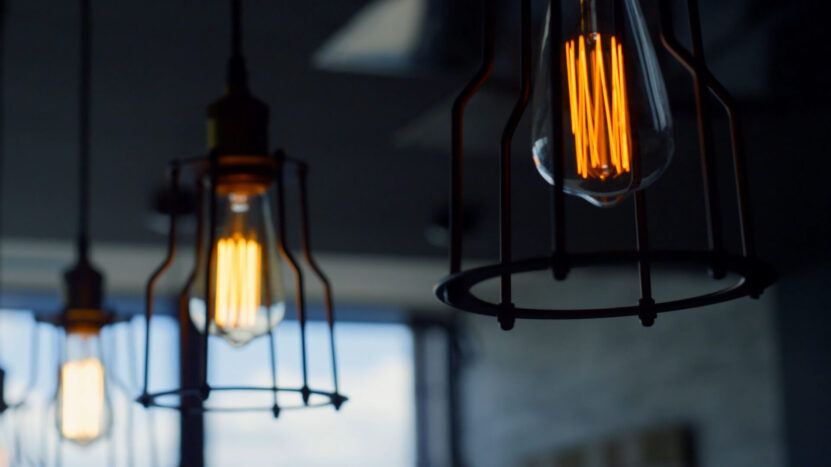
One of the most popular ways to add instant character is by incorporating statement lighting fixtures. Large pendant lights, chandeliers, or sculptural fixtures can become the focal point of a room. In kitchens, for example, oversized pendant lights above the island are trending.
Prices for statement fixtures range significantly, with options from $100 to $1,000 depending on size, design, and materials.
For instance, a modern brass chandelier from Wayfair might cost around $200, while higher-end pieces from stores like Restoration Hardware can exceed $1,500.
Vintage and Antique Lighting
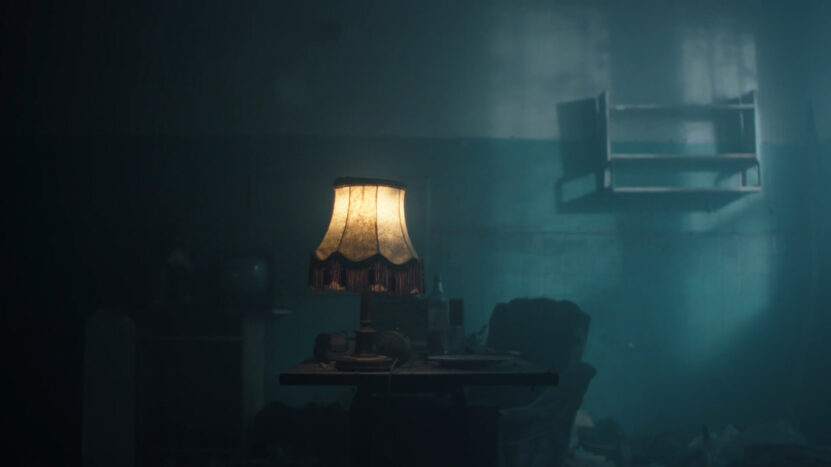
Vintage and antique lighting adds historical charm and character to a room. You can find antique chandeliers, sconces, and floor lamps at flea markets, antique stores, or online. Prices vary based on the rarity and condition of the item.
A simple vintage brass lamp might start at around $100, while an ornate antique chandelier could cost over $2,000. Restoring antique fixtures can also be a rewarding DIY project if you’re handy with electrical work.
Antique shops and specialty retailers often carry unique pieces that you won’t find in regular home stores, and these lights can create a nostalgic atmosphere in your home.
Layered Lighting
Layered lighting is key to making a space feel complete and versatile. Instead of relying on just one overhead light, combine different types of lighting, such as floor lamps, table lamps, and wall sconces. This approach adds depth to a room and allows you to adjust the mood based on the time of day.
For example, you can pair a $60 table lamp with a $100 floor lamp from popular retailers like Target or IKEA, giving you flexibility in both light intensity and style.
Energy-Efficient Lighting
Upgrading your lighting doesn’t just improve aesthetics; it can also make your home more energy-efficient. LED bulbs use significantly less energy and last longer than traditional incandescent bulbs.
You can find energy-efficient bulbs for around $2 to $10 per bulb. Many modern fixtures are now designed to accommodate LED bulbs, which can save money in the long run and reduce your home’s carbon footprint.
Where to Buy?
- Wayfair: A wide selection of affordable modern and vintage-style lighting fixtures.
- Restoration Hardware: For high-end, statement lighting pieces that add a touch of luxury.
- Home Depot: Offers a variety of budget-friendly lighting solutions, including energy-efficient options.
- Antique Stores/Flea Markets: For unique vintage and antique lighting that adds historical charm.
FAQs
How do I install floating shelves by myself?
Installing floating shelves can be a straightforward DIY project. You’ll need a drill, screws, a level, and wall anchors. Mark the spot where you want the shelves, drill holes, and insert the wall anchors for stability. Attach the mounting bracket, then slide the shelf onto the bracket.
What is the best type of lighting for a small room?
For a small room, use layered lighting to make the space feel bigger. Combine overhead lighting with table lamps or wall sconces to create depth. Opt for bright, warm LED bulbs to make the room feel cozy yet spacious.
How do I choose the right size of a chandelier?
To pick the right size chandelier, measure the room’s dimensions in feet and add them together. For example, in a 10×12 room, a chandelier with a diameter of around 22 inches would be ideal. This simple formula ensures the light fits the space proportionally.
Can I mix different finishes in my hardware?
Yes, mixing different finishes, like brass and matte black, can add visual interest to your space. Just be sure to keep a consistent look by limiting the variety to two or three different finishes.
What’s the easiest way to create a gallery wall?
To create a gallery wall, start by laying out your frames on the floor first to arrange them before hanging. Use a mix of different sizes and frame styles for an eclectic look. Make sure to space the frames evenly for a balanced appearance.
How do I maintain antique lighting?
Maintaining antique lighting involves regular dusting and careful cleaning with non-abrasive products. If your fixture has tarnished metal, you can use a metal polish designed for the specific material, but avoid harsh chemicals that might damage the patina.
What’s the best wood for flooring in high-traffic areas?
For high-traffic areas, hardwoods like oak or hickory are great choices. They are durable and resist dents and scratches better than softer woods like pine. Engineered wood or vinyl planks are also excellent options for areas with heavy foot traffic.
Last Words
Updating your home’s character doesn’t have to be a big, complicated project. Small, thoughtful changes like swapping out hardware, upgrading the lighting, or adding a focal point can make a huge difference. With options ranging from affordable floating shelves to custom hand-made tiles, there’s something for every budget and style.

